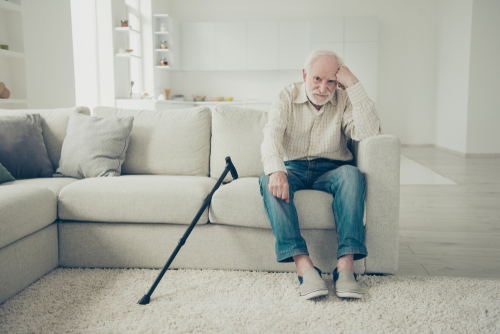Mental Symptoms of UTI in Elderly Adults

Hallucinations in elderly adults with urinary tract infection (UTI) can be quite common. But why do UTIs cause mental confusion? Can UTI cause paranoia in elderly? In this post, we explain what a UTI is and how it can impact seniors. Understanding the link between UTIs and hallucinations in elderly adults is crucial for effective care and management.
What Is a Urinary Tract Infection (UTI)?
A UTI is exactly as it sounds—an infection in the urinary tract, which includes the bladder, kidneys, ureters, and urethra. Once bacteria enters through the urethra, it can spread to the rest of the urinary tract and lead to harmful infections. UTIs are more likely to affect individuals with vaginas than penises, and older adults may be more susceptible. The bladder wall is composed of muscle fibers, and muscles weaken with age. Additionally, medical conditions such as diabetes or an enlarged prostate can prevent the bladder from emptying completely. Furthermore, the tissues lining urethra can get thinner with age and increase the risk of irritation and infection.
Mental Symptoms of UTI in Elderly
UTI psychosis in elderly adults can be quite concerning and a UTI may be difficult to diagnose if an elderly person’s communication is impaired due to dementia or other conditions. However, if there is a sudden change in behavior, the chances are good that the older adult is experiencing a UTI. UTI hallucinations and mental symptoms in seniors can include:
-
Agitation. This can include feeling on edge, nervous, or jumpy.
-
Confusion, delusions, hallucinations. This can include difficulty concentrating or being aware of surroundings. In serious cases, hallucinations can occur.
-
Lethargy. Feeling lethargic is usually concerning for an older adult, but feeling tired and run down is common when the body is fighting off an infection.
-
Violent behavior. If an older adult has never had a history of violent behavior and they suddenly have an outburst, it can be a sign of a UTI. When an older adult feels lost or disoriented, they may lash out at those around them.
Now that we know more about UTI in elderly and hallucinations, let’s take a closer look at treating a UTI.
Download Our FREE Healthy Aging Diet Guide
Treating a UTI
Now that we have a deeper understanding of how UTI plays a part in elderly hallucinations, we’ll review some of the common ways to treat a UTI.
-
Ensure proper hygiene. Use soap and water to limit the amount of bacteria that can enter the urethra. Always wipe front to back.
-
Empty the bladder frequently. It’s always best to go to the bathroom whenever you feel the urge. Do not try to hold it in.
-
Increase water intake. This can help flush out the urinary tract. Cranberry juice can also be effective.
-
Eat healthy. Steer clear of spicy or acidic foods as well as carbonated drinks and sugary sweets. Additionally, eating or drinking items with Vitamin C can help prevent the growth of bacteria in urine. You can also try adding a teaspoon of baking soda to a glass of drinking water and to neutralize acidity in urine.
-
Use heat. Simply putting a heating pad on the stomach or pubic area can help relieve pain.
While UTIs are a common occurrence, they can present significant mental symptoms in seniors, including agitation, confusion, lethargy, hallucinations, and even violent behavior. While they can be hard to diagnose, especially in individuals with cognitive impairments, recognizing these symptoms as potential indicators of UTIs are critical to providing treatment.
Subscribe
Date: February 20, 2024


